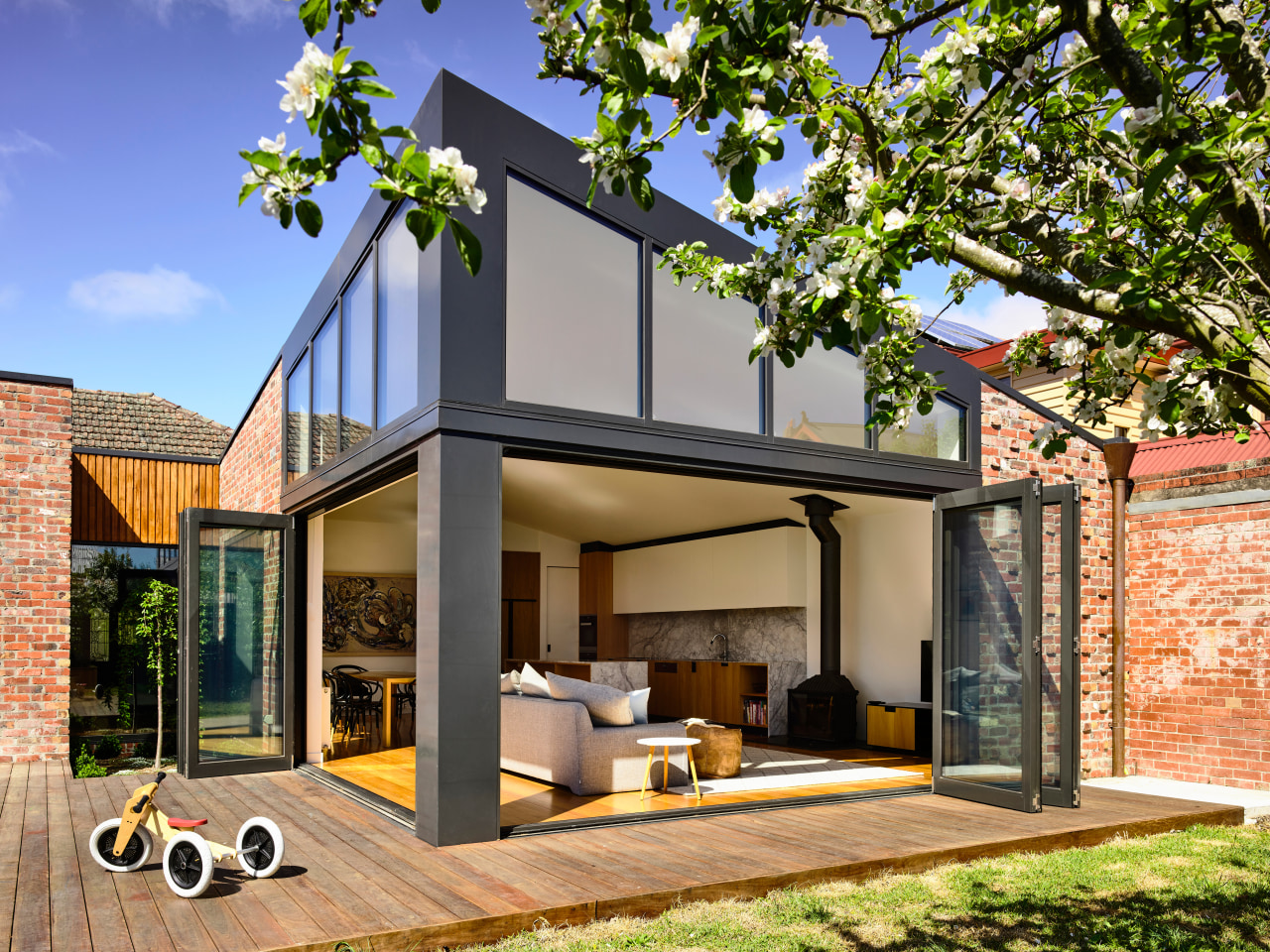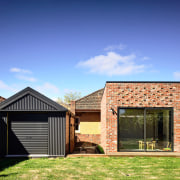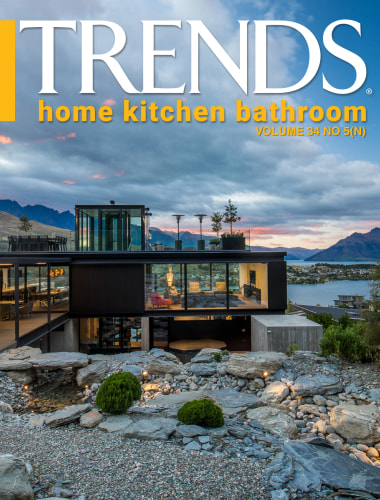Modern, clean-lined entertainment zone positioned at the rear of existing older home
Tweaked original plans result in a hall running right through this 1940s home, providing a glimpse of the new light-filled extension at the rear

Not all renovation and extension architecture is driven by a dilapidated existing residence. In fact, for this design by architect Nathan Porter, the 1940s home had been in excellent condition with a wealth of beautiful interior detailing.
“However, the owners wanted to add open-plan living at the rear to take in the north-facing sun and to connect with the verdant backyard setting,” says Porter. “Plus, they wanted to draw natural light into the older part of the home.”
To achieve all this, the architect effectively turned the home into two zones – the original house is the more private area with bedrooms and a front-room study, while the new extension at the back offers generous open-plan living.
“In the existing home, we simplified a slight jumble of rooms at the back and added modern ensuites to existing bedrooms,” says Porter. “And, importantly, we created a hallway that provides a welcoming line of sight from the front door right through to the rear extension.

The long, linear corridor also allows natural light to penetrate deep into the home’s interior.
While the extension is different in character, it flows on seamlessly from the existing house as Porter sourced recycled floorboards for the new build that match the floors in the original home.
As well as the principal living volume, the new public zone includes a rumpus room and a courtyard area that separates the two.
The main volume has clerestory windows to maximise natural light and bifold doors that open the space up the rear garden. It comprises a new kitchen, a dining area and the living area.
“Seen from across the small courtyard, the rumpus room almost reads as a freestanding element,” he says.
“The courtyard is a little like a buffer zone, whereby the parents can keep an eye on the children without being in their face.”

The rear extension is built on a wood frame with substantial steel also involved to allow for the steep angle of the roof and ample glazing.
“The owners wanted a spacious, airy room. However, we were somewhat limited by set-back heights by the boundary and so raised the angle of the roof to optimise a sense of volume on the inward-looking side of the space.”
As with the flooring, the existing and new exteriors also flow, as Porter sourced matching recycled clinker brinks for the new sections. These are given a decorative treatment – an echo of the attention to detailing in the original home.
Credit list
Architect
Kitchen designer
Roof
Main floor
Wallcoverings
Heating
Furniture
Countertops and splashback
Kitchen sink
Oven, cooktop, dishwasher
Refrigeration
Builder
Cladding
Tiles
Paint
Lighting
Kitchen cabinetry
Blinds
Taps
Ventilation
Awards
Story by: Charles Moxham
Photography by: Derek Swalwell
Home kitchen bathroom commercial design
Masculine meets mixed use
Social agenda
At one with the Amazon
Home Trends Vol. 34/5
When you start your next home design project – whether it's a new build or renovation – you'll probably have an idea of ...
Read More












